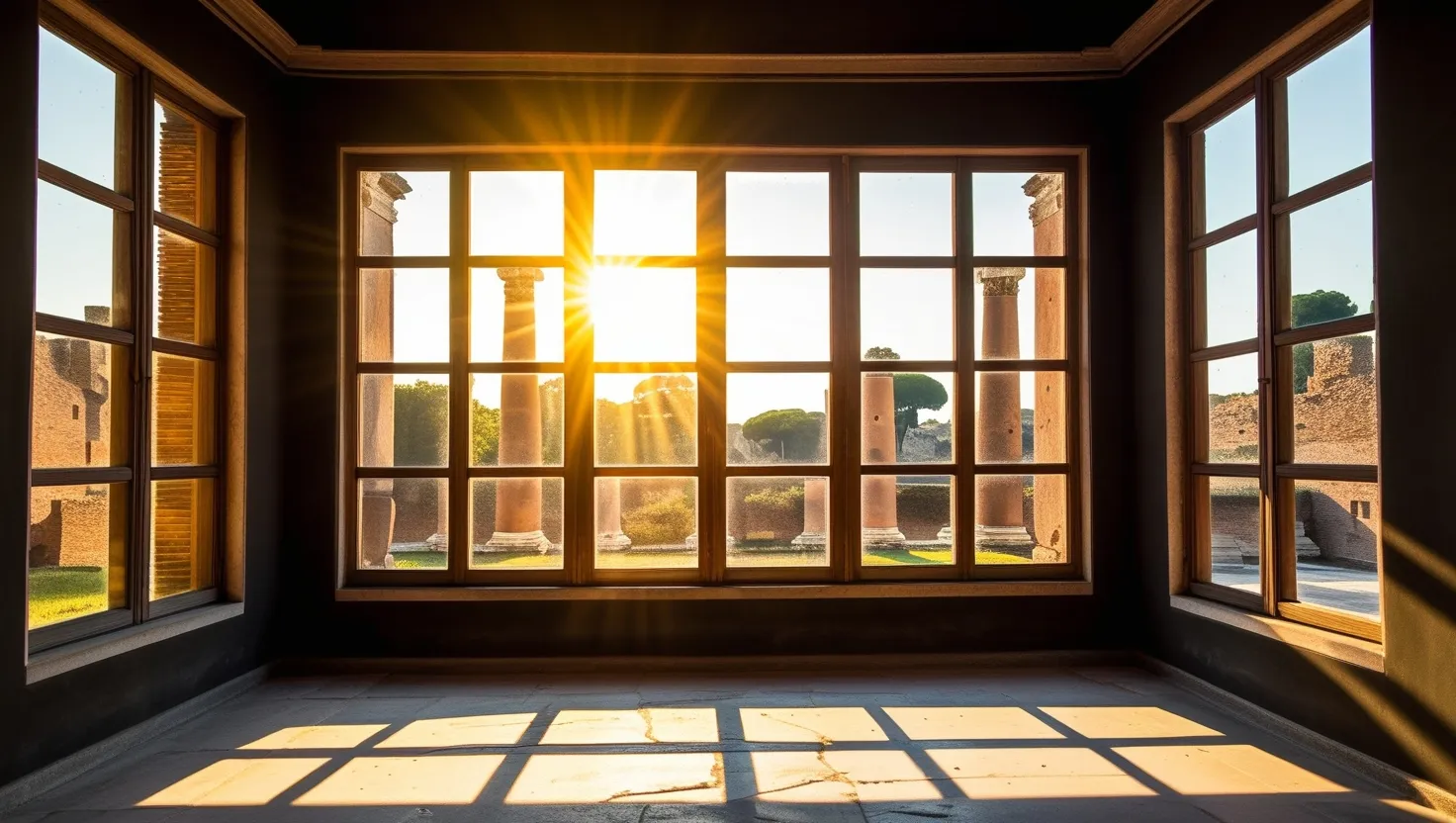Imagine standing in a sunlit room centuries ago—when light was a rare, precious thing. Glass, so familiar today, was a marvel. Its mere presence marked a shift so profound that it changed much more than architecture; it changed how we interact with the world and each other. I look at glass and see more than a material. I see a transparent thread weaving itself through human progress, refracting our hopes, questions, and discoveries.
What fascinates me most is that clear glass owes its ancient origins to something rather mundane: the desire to let in light without letting in wind, sand, or strangers. The Romans, with their innovations, didn’t just create brighter rooms; they created new rhythms of daily life. With transparent windows, daylight entered more homes. Families read, worked, and talked under brightening beams long after the outside world had dimmed. It’s a small change with enormous consequences. When you alter how people experience time and space, you alter what they think is possible.
“Light gives of itself freely, filling all available space. It does not seek anything in return; it asks not whether you are friend or foe. It gives of itself and is not thereby diminished.” That’s Michael Strassfeld, and it reminds me how glass carries light into our lives, again and again, shaping not just our rooms but our imaginations.
Once glass became widely available, the world outside became less of a mystery. Suddenly, those inside could see out, and those outside—well, most of the time, they still only saw their own reflections. This boundary, both visible and invisible, became a quiet stage for social change. Conversations shifted; businesses flourished longer into the evening, communities discovered a new kind of togetherness under roofs that no longer felt like caves.
But it didn’t end there. In the glow of Renaissance Europe, glass turned from architectural marvel to intellectual powerhouse. Venetian craftsmen, cloaked in secrecy and officially forbidden from leaving their island, transformed glass into something more precise and pure than the world had ever seen. Their breakthroughs enabled the production of optical lenses—simple discs curved just so, capable of extraordinary tricks.
Have you ever wondered what it’s like to see something no one else can? In the Middle Ages, spectacles gave aging eyes a fresh lease on scholarly life. What’s less often discussed is how these simple gadgets quietly democratized knowledge. Not only monks and noblemen, but tradesmen and artisans too, could study and practice for decades longer. Ideas stuck around. Skills, passed down, survived the march of time.
“The real voyage of discovery consists not in seeking new landscapes, but in having new eyes.” Marcel Proust’s words capture what followed. Glass turned into lenses, and with those, we literally gained new eyes. The first microscopes and telescopes must have seemed like magic. Imagine Antonie van Leeuwenhoek, peering through a self-made microscope, discovering a teeming world in a single drop of water. His revelation upended centuries of assumptions about life, disease, even the soul. Suddenly, the invisible was visible, and the boundaries of the known grew porous, all because of a sliver of glass.
This ability to see the unseen became the oxygen for modern science. Newton split sunlight with a prism, showing colors are hidden in white light—not painted on by some celestial artist, but native to the light itself. His famous experiments, using nothing but glass and sunlight, changed not just physics but philosophy. How much of what we see is truly “real” and how much is filtered through our tools?
I’m often struck by what glass means for our sense of self, too. Mirrors—an overlooked cousin in the glass family—let us confront our own faces. Before reliable glass mirrors existed, most people never saw a true image of themselves. That psychological leap—moving from “how others see me” to “how I see myself”—influenced literature, portraiture, and even personal identity.
Let’s pause to consider: Do you recall the first time you saw yourself perfectly reflected? What did it change for you? For entire generations, the mirror’s honest gaze sparked introspection and vanity, yes, but also empathy and curiosity.
Of course, glass has never just been about science or art. It’s been at the very center of industry. In 17th-century England, the addition of lead oxide created crystal glass—suddenly more brilliant, easier to work, and perfect for both chandeliers and lab equipment. Imagine the glow of light passing through the first cut glass goblet or illuminating the crystal prisms of an early chandelier. Each innovation was a gamble, often risking fortunes or reputations, but the payoff was a clearer, brighter world.
Large panes arrived thanks to industrial processes only in the nineteenth century. Sure, you’ve seen photos of the Crystal Palace—but how often do you think about the craftsmanship and engineering behind that marvel? Huge sheets of glass, rolled and cooled with careful precision, allowed architects to imagine—and build—environments suffused with natural light. The modern office, the greenhouse, the department store: all are children of this transformation.
“People who live in glass houses should not throw stones.” It’s an old proverb, but in these glass-walled environments, privacy and exposure, intimacy and display, coexist in a new tension. I often wonder: Has our openness—literal and figurative—made us better, or just more visible?
In the digital age, the revolution continues in ways I find almost surreal. Ultra-pure glass fibers snake beneath oceans, carrying conversations and code faster than any traveler. The pixel-sharp glass of a smartphone screen or the crystal clarity of an OLED television display—these are the windows of our time. They don’t just show the outside world; they shape virtual worlds and mediate nearly every modern interaction. If you’re reading this on a screen, you owe that moment to ancient experiments with heat and sand.
What’s less known is that glass technology is still one of our most dynamic frontiers. Flexible glass, capable of folding like paper, is already appearing in wearables and medical devices. Scientists use glass with engineered imperfections to manipulate light in quantum computers. Even the world of art glass, often sidelined by discussions of science, is alive with creators pushing boundaries—blown forms that twist the rules of optics, sculptures that play with perception and color in ways that surprise even theorists.
“Glass is the most magical of all materials. It transmits light in a special way.” That’s Dale Chihuly, whose luminous sculpture highlights how glass remains a playground for the inventive spirit.
We tend to focus on the iconic stories—the stained glass in Notre Dame, the gleaming skyscrapers of Manhattan. Yet, I find it just as intriguing to consider the quiet revolutions. Small laboratory slides and precision pipettes powered medical research. Simple bottles kept food safe, allowing cities to grow. Glass syringes, infinitely reusable and contaminant-free, revolutionized healthcare long before plastic disposables.
Through five transparent revolutions—windows, lenses, spectacles, microscopes, and fiber optics—glass has shifted both our literal and figurative point of view. What’s next? Could glass someday help us manipulate entangled photons, letting us communicate in absolute secrecy? Might “smart glass” windows adjust their tint to match our moods?
How would you invent with glass today, if you could? What might you see or show the world with a new kind of clarity?
To me, the journey of glass isn’t just about science or invention. It’s a story about making things visible, about expanding both what we see and how we see ourselves and others. In these reflections and transmissions, we find a material that has made all the difference—not just in what is revealed, but in the ways we imagine and reshape our lives, again and again.






